April 30, 2018
April Gardening at Buckhorn Inn
We love gardening at Buckhorn Inn! Our guests from other parts of the country often are curious about our growing season. So we thought we would give you a peek into what we are doing this April.
Our display of spring bulbs was beautiful this year. We are marking their locations so we will know where to fertilize this fall. We are diligent about removing the faded flowers to make everything look better and to keep seeds from forming. Our Siberian irises are blooming now. After they finish we will divide them and replant.
We have pruned the perennials that have not yet started to grow, and renewed our mulch so that is about 3″ deep. We pruned our trees, removing dead and diseased limbs, before they began to leaf out.
The annual flowers we have set out bring color now, and throughout the entire summer. Even though some early balmy temperatures and sunny days were seductive, we waited until we were sure spring had arrived for good before we put them out!
Gardening for Edibles
This month we filled our new raised-bed vegetable gardens with seeds for early and late lettuce mixes, kaleidoscope carrots and okra. Last week we planted tomatoes and a mix of sweet and hot peppers. We are especially pleased with our new kitchen herb garden. It is planted right outside the kitchen door for easy access by our chefs.
Our selections include dill, cilantro, basil, curry, rosemary, majoram, oregano, thyme, and sage. We look forward to seeing how the supply of fresh herbs and vegetables will inspire our chefs!
The school of agriculture at the University of Tennessee is a wonderful source of information and inspiration. Check out their website http://www.agt.tennessee.edu/utg for information and inspiration! They also have information on upcoming events, such as their May 6 Plantapalooza and hosta sale!
We wish you a wonderful spring and hope that your gardens grow and flourish!
April 23, 2018
Rhododendron Provides Stunning Spring Display
Have you been lucky enough to come upon a rosebay rhododendron on the Buckhorn Inn Nature Trail while it is in full bloom? You can see several beautiful specimens toward Cottage 1 and also growing along the edge of Buckhorn Pond. They reach their blooming peak in June.
The Spring 2018 issue of Smokies Life Magazine http://www.smokiesinformation.org/smokies-life-magazine celebrates this beautiful shrub. There are four native species of this wonderful plant in this area.
The rosebay grows at lower levels and can be found throughout the Great Smoky Mountains National Park. The small-leafed variety also grows at lower levels. The Carolina and the Catawba can me found at mid- to high-levels.
The word “rhododendron” means rose tree. The Smokies Life article by Courtney Nix contains this marvelous description, written in 1799 by explorer John Fraser, Jr.: “We had been traveling among the mountains, and one morning we were ascending to the summit of Bald Mountain in the midst of a fog so dense that we could not see farther than a yard before us. As we reached the top the fog began to clear away, and the sun to shine out brightly. The first objects that attracted our eye, growing among the long grass was rhododendron catawbiense in full bloom. There was no other plant there but itself and the grass, and the scene was beautiful.” Indeed, it must have been spectacular!
Growing Rhododendron Shrubs
These evergreen bushes prefer moist, acidic soil. They do well in light shade. High winds can harm the plants, so be sure they are planted near wind-breaks. Pine needles are good used as a mulch as they add acid to the soil and keep the ground moist.
Rosebays, such as ours, do not bloom every year. They have an irregular bloom cycle. Some years, perhaps due to good weather, lack of a late frost, or good patterns of rainfall, more shrubs than usual bloom. Count yourself lucky if you happen to be in the Great Smoky Mountains during one of these “Big Bloom” years!
April 17, 2018
Celebrate England on St. George’s Day
Are you familiar with St. George’s Day? As the website http://www.st.georgesday.com points out, the Irish celebrate St. Patrick’s Day and the Scottish have St. Andrew’s Day. All English people should come together on April 23 to celebrate England’s own patron saint. Traditionally one flies the St. George flag and wears a red lapel rose.
The history of St. George’s Day is a long one. The Council of Oxford declared April 23 to be the day of recognition in 1222. In 1348 St. George became the Patron Saint of England and the protector of the royal family. In 1552, during the English Reformation, banners for all saints, except Saint George, were banned. The April 23 holiday remembering St. George’s death, was a major one, on a par with Christmas, until the 18th century when England and Scotland united. Recently many societies, including the English Heritage and the Royal Society of St. George, are working to reinstate the major holiday.
Who Do We Celebrate on St. George’s Day?
Saint George was a Roman soldier. He was put to death in AD 303 for refusing to recant his Christian faith. He was especially venerated as a Christian martyr by the Crusaders. In medieval romance stories, St. George slew a dragon with a lance called Ascalon. Interestingly, centuries later Winston Churchill used the name Ascalon for his personal aircraft during World War II. He is often depicted seated upon a white horse, slaying a dragon.
George is regarded as a protective saint. His cross forms the national flag of England and is featured on the union flag of the United Kingdom.
One of our favorite local places to hoist a pint in honor of St. George is the Fox and Parrot Tavern located on Glades Road. Perhaps we will see you there!
April 9, 2018
Honeybees Benefit Tennessee Agriculture
Honeybees pollinate numerous crops. In Tennessee the value of crops benefiting from their pollination exceeds $119 million annually. Unfortunately, diseases and pests have caused annual losses of bees, in some years as many as 50%.
We are pleased to be telling you that Buckhorn Inn is doing its part to protect and support these important pollinators. Thanks to our son Jack, two new hives have been put up and two colonies of bees installed. Queen Bee Elizabeth and her minions are on the left, while Queen Bee Victoria has her kingdom in the hive on the right. Our immediate goal is to increase the population of honeybees. But ultimately we hope to produce enough delicious honey to supply the Buckhorn Inn kitchen and to offer some to guests. We thought you might want to learn about honey bees along with us!
Facts about Honeybees
- 1. Honeybees have six legs, two compound eyes, three simple eyes, two pairs of wings, a nectar pouch, and a stomach. http://www.benefits-of-honey.com
- 2. Honeybees can fly as fast as 15 miles per hour and can travel as far as six miles. Their wings beat about 200 strokes per second.
- 3. In order to collect one kilogram of honey, a hive of bees will fly the equivalent of three orbits around the earth.
- 4. The queen bee can live up to five years. Her colony consists of 20,000 to 60,000 bees.
- A forager bee visits 50 to 100 flowers on each flight from the hive. She repeats these trips all day, averaging as many as 2,000 flowers per day.
- It takes six to eight pounds of honey ingested for bees to produce one pound of beeswax.
- The only bees that sting are the worker bees. They will only sting if they feel threatened, and will die once they sting.
- In the lifetime of a worker bee, she produces about 1/12th teaspoon of honey.
- Bees overwinter by clustering in their hives to keep the queen and themselves warm. They feed on the honey collected during warmer months and on syrup provided by the beekeeper.
- Forager bees find flowers then return to the hive and share detailed directions. In 1973 Karl von Frisch received the Nobel Prize in Medicine for cracking the code of the bees–the waggle dance.
Watch our blog and Facebook and Instagram posts for more information about our bees. We are proud members of the beekeeping associations of Sevier County and Tennessee. You may visit http://www.tnbeekeepers.org for information on the resources they offer.
April 3, 2018
Elk Thrive in Great Smoky Mountains National Park
Visitors to the Great Smoky Mountains National Park look forward to spotting our large wildlife–namely bear and elk. We are fortunate indeed to be located near such splendor.
Did you know that once large numbers of elk freely roamed the Appalachian Mountains and eastern United States? Unfortunately, overhunting and destruction of habitat severely lowered their numbers. Conservation groups became concerned that the animals would eventually become extinct. The last of the magnificent beasts disappeared from Tennessee in the mid 1800’s.
In 2001 the National Park Service reintroduced elk to the Great Smoky Mountains National Park. Twenty-five of the animals were moved to the park then, and 27 more were placed here in 2002. The elk (or wapiti) wear radio collars and ear tags to aid conservationists in tracking their range and movements. The herd now numbers as many as 200 animals.
These are the largest animals in the Smokies. The bulls weigh 600 to 700 pounds, measure 7 to 10 feet long, and sport antlers that can measure 5 feet from tip to tip.
Safe Viewing of Elk in the Park
The best times to view these animals are early in the morning and late in the evening. They also are more active after storms or on cloudy days. Most of them are located in the Cataloochee area in the southeastern section of the park, easily accessible from the Buckhorn Inn. This is a lovely area to hike and picnic as well. Always view these wild animals from a safe distance, using binoculars or a camera for close-ups. Be especially careful of calves as there likely is an anxious mother nearby. The males may perceive you as a challenger and charge. The National Park Service offers a short video about safely viewing elk. You may find a link to it at http://www.nps.gov/grsm/learn/nature/elk.htm
During March and April the animals begin to shed their antlers. Please note that it is not legal to remove antlers from the park. The discarded antlers are a rich source of calcium for other wildlife in the park.



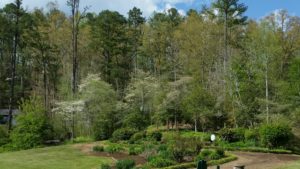

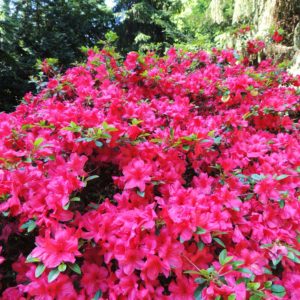

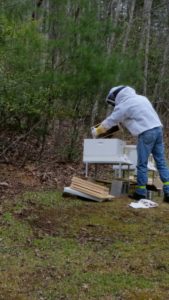
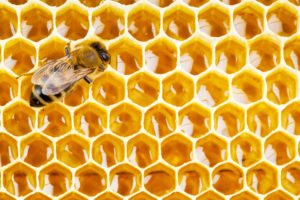
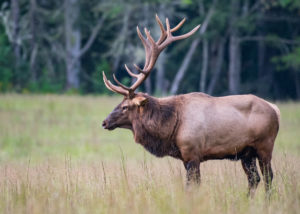

Gatlinburg Weather
Click for weather forecast